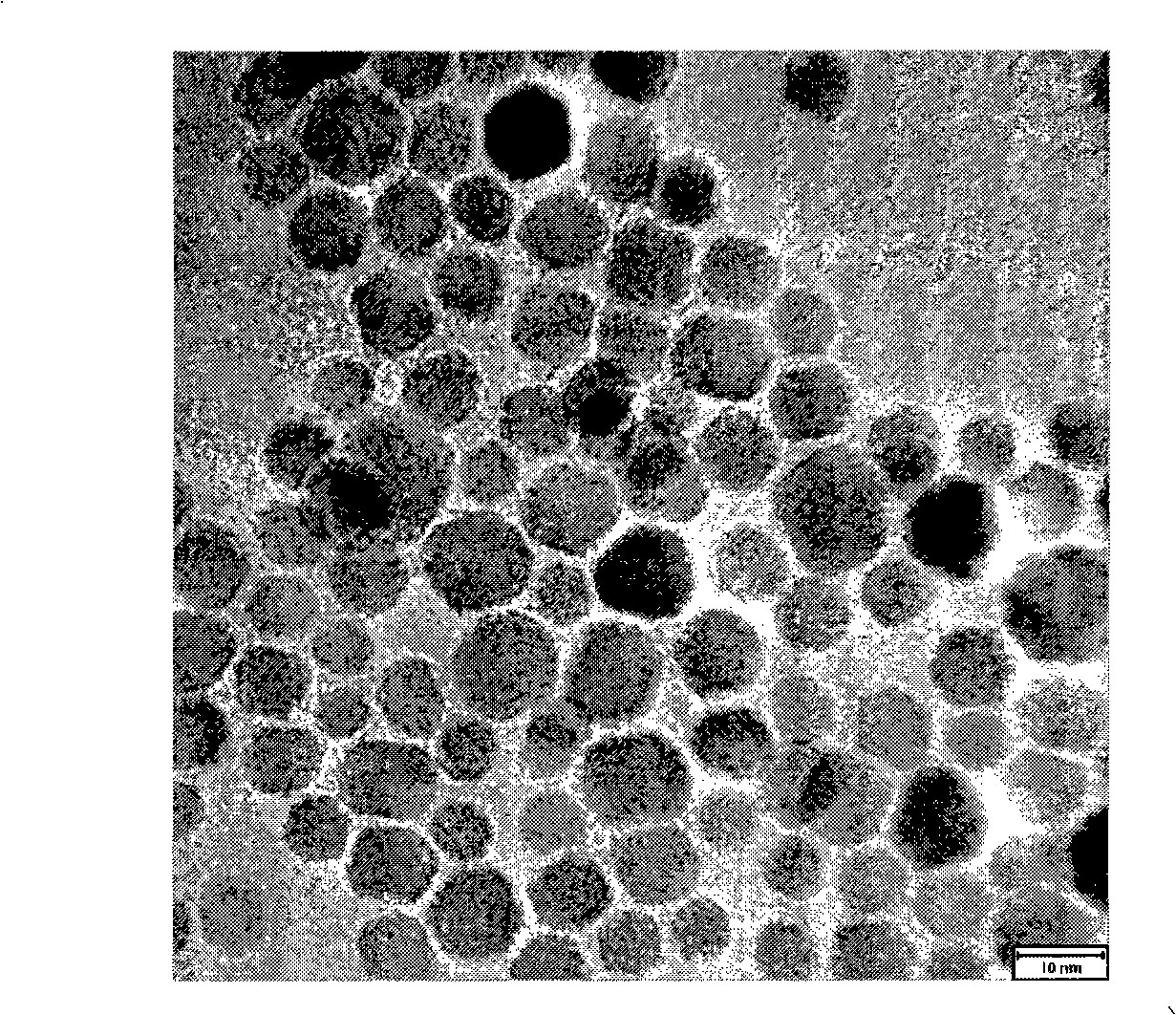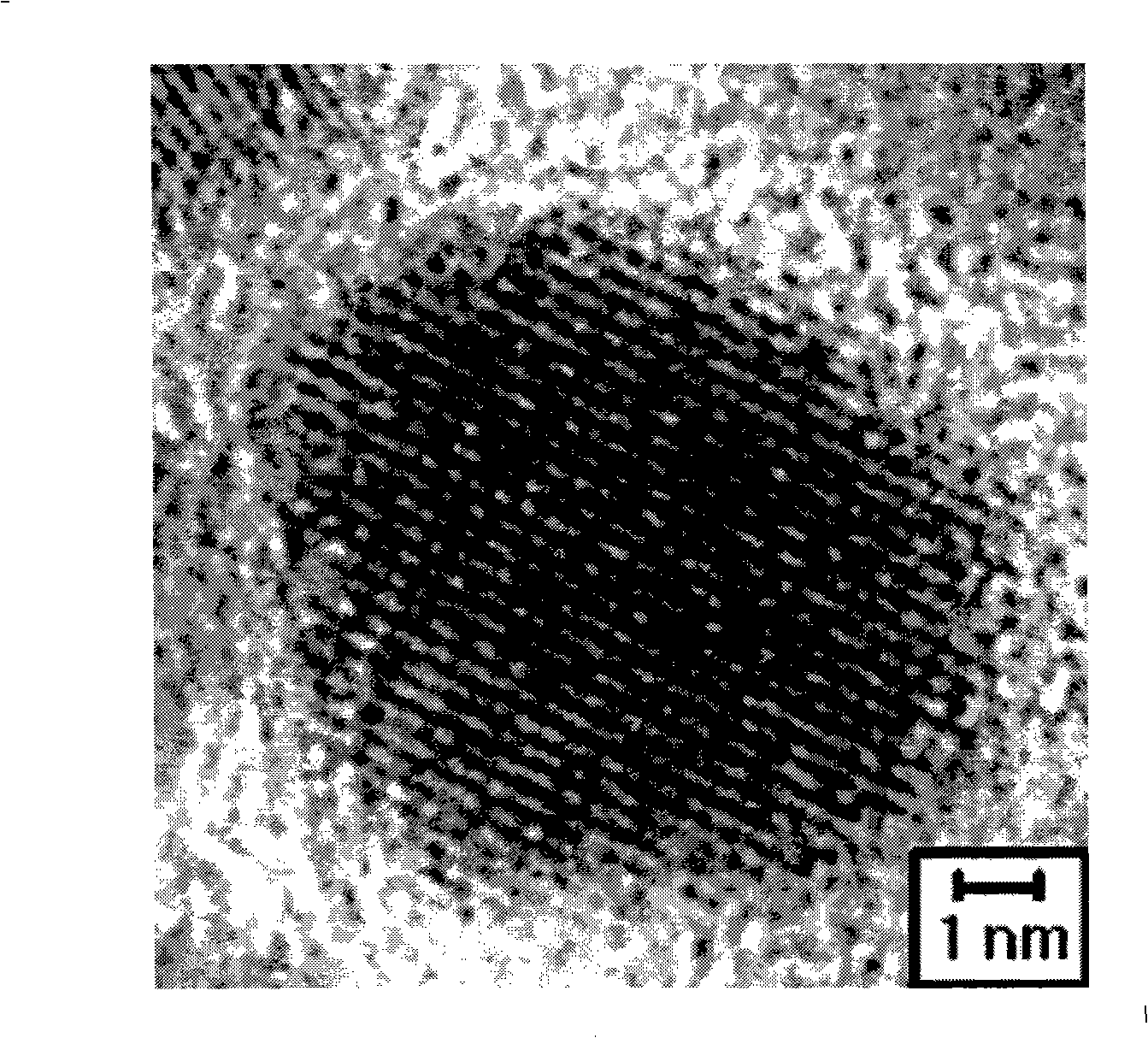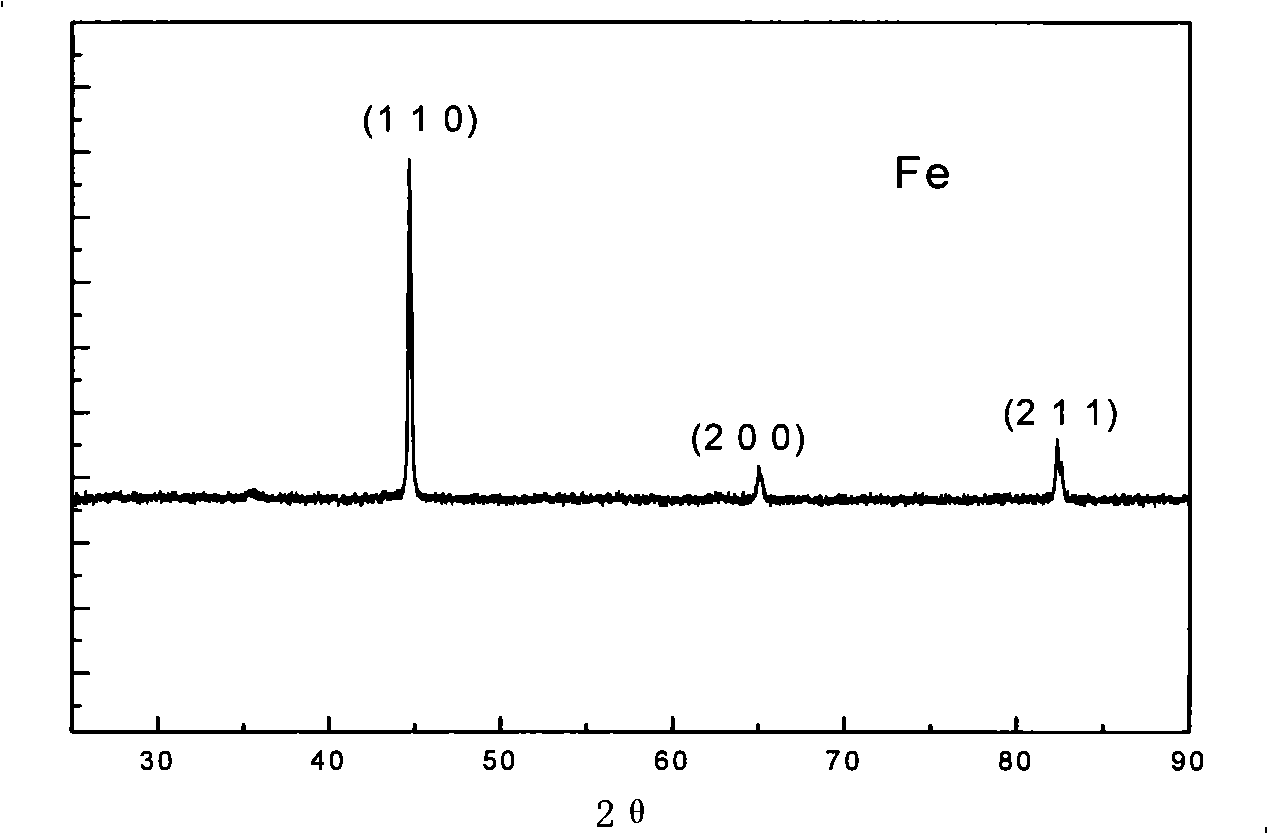Preparation and separation method of monodisperse amorphous state nickel nano particle
A superparamagnetic and separation method technology is applied in the field of preparation and separation of monodisperse superparamagnetic iron nanoparticles, and can solve the problems of unsuitable large-scale industrial production, high price, and no domestic reagents.
- Summary
- Abstract
- Description
- Claims
- Application Information
AI Technical Summary
Problems solved by technology
Method used
Image
Examples
Embodiment 1
[0025] 2mmol of iron acetylacetonate, 6ml of trioctylphosphine, 6ml of oleylamine, 2mmol of 1,2-hexadecaneol, and 40ml of liquid paraffin were put into a 100ml stainless steel autoclave reactor, and high-purity nitrogen gas was introduced to remove oxygen. Pass hydrogen gas (purity 99.9%) into the autoclave, fill the pressure to 4.0MPa, adjust the stirring speed to 500rpm, then raise the temperature to 300°C, and react for 3 hours. After the reaction was completed, the reactor was opened, and the reaction solution was taken out and placed in a 250 ml beaker. Add 40 milliliters of ethanol and 10 milliliters of petroleum ether (60-90° C.) into the beaker, stir well and place it on the surface of the permanent magnet. The liquid in the beaker will separate into two layers, remove the supernatant. Repeat the above steps 3-5 times, the black nanoparticles will be enriched at the bottom of the beaker. The obtained nanoparticles are vacuum-dried at 100° C. for one hour, and then co...
Embodiment 2
[0027] 2mmol of iron acetylacetonate, 2ml of trioctylphosphine, 3ml of oleylamine, and 40ml of liquid paraffin were put into a 100ml stainless steel autoclave reactor, and high-purity nitrogen gas was introduced to remove oxygen. Pass hydrogen gas (purity 99.9%) into the autoclave, fill the pressure to 4.0MPa, adjust the stirring speed to 500rpm, then raise the temperature to 300°C, and react for 5 hours. After the reaction was completed, the reactor was opened, and the reaction solution was taken out and placed in a 250 ml beaker. Add 40 milliliters of ethanol and 10 milliliters of petroleum ether (60-90° C.) into the beaker, stir well and place it on the surface of the permanent magnet. The liquid in the beaker will separate into two layers, remove the supernatant. Repeat the above steps 3-5 times, the black nanoparticles will be enriched at the bottom of the beaker. The obtained nanoparticles are vacuum-dried at 100° C. for one hour, and then cooled to obtain nanoparticle...
Embodiment 3
[0029]2mmol of iron acetylacetonate, 2ml of trioctylphosphine, 3ml of oleylamine, and 40ml of liquid paraffin were put into a 100ml stainless steel autoclave reactor, and high-purity nitrogen gas was introduced to remove oxygen. Feed high-purity nitrogen (purity 99.99%) into the autoclave, fill the pressure to 4.0 MPa, adjust the stirring speed to 500 rpm, then raise the temperature to 300° C., and react for 5 hours. After the reaction was completed, the reactor was opened, and the reaction solution was taken out and placed in a 250 ml beaker. Add 40 milliliters of ethanol and 10 milliliters of petroleum ether (60-90° C.) into the beaker, stir well and place it on the surface of the permanent magnet. The liquid in the beaker will separate into two layers, remove the supernatant. Repeat the above steps 3-5 times, the black nanoparticles will be enriched at the bottom of the beaker. The obtained nanoparticles are vacuum-dried at 100° C. for one hour, and then cooled to obtain ...
PUM
| Property | Measurement | Unit |
|---|---|---|
| particle size | aaaaa | aaaaa |
| particle size | aaaaa | aaaaa |
Abstract
Description
Claims
Application Information
 Login to View More
Login to View More - R&D
- Intellectual Property
- Life Sciences
- Materials
- Tech Scout
- Unparalleled Data Quality
- Higher Quality Content
- 60% Fewer Hallucinations
Browse by: Latest US Patents, China's latest patents, Technical Efficacy Thesaurus, Application Domain, Technology Topic, Popular Technical Reports.
© 2025 PatSnap. All rights reserved.Legal|Privacy policy|Modern Slavery Act Transparency Statement|Sitemap|About US| Contact US: help@patsnap.com



